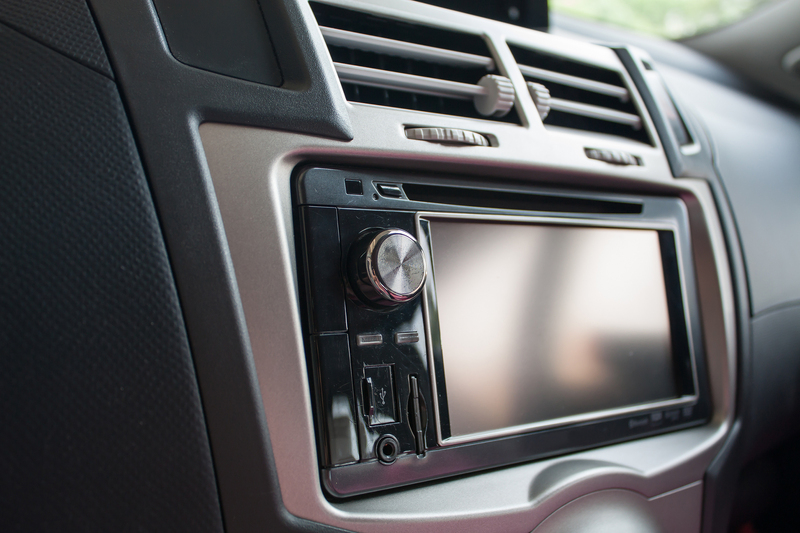Moving Heavy Stuff Solo: Best Practices and Precautions
Moving heavy objects alone can be a daunting task, whether you are rearranging furniture, relocating to a new home, or tackling a DIY project. However, with the right strategies, tools, and precautions, you can simplify the process and avoid injury or damage. This comprehensive guide explores the most effective best practices for moving heavy items by yourself, critical safety recommendations, and clever tricks from pros. If you're planning to move heavy stuff solo, read on for essential tips that will make your task manageable and safe.
Why Solo Heavy Lifting Calls for Special Care
Many injuries at home or in the workplace happen due to improper lifting or attempting to move heavy things alone without sufficient preparation. Back strains, pulled muscles, slips, and even broken bones can result from poor lifting techniques. Understanding the risks and responsibilities of moving overweight items is vital, especially when doing so without assistance.
- Avoid Overexertion: Lifting more than you can handle may lead to severe injury.
- Property Damage: Unsteady loads may dent walls, scratch floors, or break fragile items.
- Personal Safety: Safety takes priority - improper technique can cause lasting harm.

Essential Preparation Before You Move Heavy Objects Alone
No matter the item - a couch, refrigerator, safe, or bulky equipment - preparation is everything when it comes to single-handed heavy moving. Follow this systematic approach before you lift anything.
1. Assess the Item and Pathway
- Weight & Size: Check the actual weight. Anything over 50 lbs (about 23 kg) is considered heavy for one person.
- Shape & Handling Points: Identify stable places to grip and balance the object.
- Obstacles: Clear the area of tripping hazards. Keep pets and children out of the way.
- Flooring: Consider surface types to avoid slipping or damage.
- Doorways & Corners: Measure and ensure the item fits through all spaces en route.
2. Gather the Right Tools & Equipment
- Dollies and Hand Trucks: Furniture dollies (flat platforms with wheels) and upright hand trucks make moving large items exponentially easier.
- Lifting Straps: These special straps help you leverage stronger muscle groups and balance the load better.
- Moving Blankets and Sliders: Protect your heavy object and surfaces with thick moving blankets. Furniture sliders (plastic or felt pads) let you "slide" items across floors with minimal force.
- Work Gloves: Enhance grip and shield your hands from blisters or sharp edges.
- Appliance Dolly (for large appliances): Specially built for weighty refrigerators, washers, etc., with stair climbing features.
- Protective Gear: Wear closed-toe, non-slip shoes, and consider a back support belt.
3. Create a Step-by-Step Plan
- Envision Each Move: Plan out every step, from where you'll grip the object to where you'll set it down.
- Identify Rest Points: Know safe, flat spots to rest the object if you need a break.
- Have a Phone Handy: In case of emergency, ensure you can quickly call for help.
Safe Lifting Techniques for Moving Heavy Objects Alone
Using the correct lifting technique is crucial for preventing back and muscle injuries. Here are time-tested tips you should practice every time you move heavy stuff solo.
1. Keep a Wide, Stable Base
- Position your feet shoulder-width apart for solid balance.
- Face the load directly and do not twist your body.
2. Bend at the Knees, Not the Waist
- Squat down: Lower your body by bending your knees and hips, keeping your back straight.
- Engage your core muscles to support your spine as you lift.
3. Get a Firm Grip and Keep the Load Close
- Lifting close: Maintain the load as close as possible to your waist. Avoid extending your arms.
- Firm handholds: Use gloves for grip. If the item has handles, use them. Otherwise, grasp the base solidly.
4. Lift Smoothly and Don't Rush
- Lift with your legs, not your back. Never "jerk" the item upward.
- Move slowly and carefully. Avoid quick turns or sudden changes in movement.
5. Set Objects Down Carefully
- Squat again, keeping your back straight, to lower the item gently onto the floor or surface.
Tricks for Moving Heavy Stuff Without Help
When tackling large items alone, creativity, and resourcefulness are your best allies. These practical hacks will help you move heavy things solo with less strain and less risk.
Use Furniture Sliders
- Place sliders under the corners or legs of heavy furniture. Push slowly, and the item will glide easily across the floor.
- Pro Tip: Plastic sliders are best for carpets, while felt sliders are suited to hard floors.
Leverage Rollers or PVC Pipes
- Place several sturdy dowels, rolling pins, or short PVC pipes under a heavy object. Push the item as it rolls over each roller, moving the back one to the front as you progress.
- This ancient technique allows you to move massive weights with minimal effort - perfect for moving bulky objects alone.
Use Lifting Straps for Solo Carrying
- Adjustable lifting straps (sometimes called "forearm forklifts") can help distribute the weight more evenly across your body, engaging leg and core muscles rather than relying on your arms and back.
Disassemble When Possible
- Remove legs, shelves, or drawers when moving large furniture. Transport smaller pieces separately to lighten the load.
- Don't forget to keep all screws and small parts in a labeled bag for reassembly.
Make Use of Inclined Planes or Ramps
- If you need to move something up stairs or over a curb, lay down a sturdy ramp or board. Slide or dolly the item up the incline instead of lifting it outright.
Utilize Blankets or Towels for Dragging
- Protect delicate floors and make sliding easier by placing the item on a thick blanket or towel. Carefully pull from the ends.
Leverage Leverage!
- Use a crowbar or pry bar to lift one side of a heavy item to insert sliders, rollers, or get a better grip.
Critical Safety Precautions When Moving Heavy Items Solo
Your well-being should always be your highest priority. Many injuries can be avoided by taking these solo heavy lifting safety measures seriously.
- Do Not Move Items Too Heavy for One Person: For anything over 100 lbs (45 kg) - such as gun safes, pianos, or large appliances - hire professionals if at all possible.
- Wear Appropriate Clothing: Avoid baggy clothes that may snag. Wear sturdy shoes with good grip.
- Take Regular Breaks: Fatigue dramatically increases your risk of injury. Hydrate, rest, and stretch.
- Avoid Wet or Slippery Floors: Mop up any spills and ensure surfaces provide good traction.
- Don't Block Your Vision: When carrying large items, keep a clear line of sight ahead to avoid tripping or colliding with obstacles.
- Know Your Limits: If something feels too awkward or heavy, wait for help or reconsider your plan.
Common Mistakes to Avoid When Moving Heavy Stuff Alone
Learning from others' errors can help you prevent accidents and damage. Here are several common pitfalls to steer clear of during solo heavy moving:
- Relying Solely on Strength: Technique and leverage are more important than brute force.
- Ignoring Minor Pains: If you feel discomfort or pain, stop immediately and reassess.
- Skipping the Warm-Up: Light stretching prior to lifting can help prevent muscle strains.
- Forgetting to Protect Floors: Always use furniture sliders, blankets, or cardboard on delicate surfaces.
- Neglecting to Secure the Load: Straps and ropes prevent shifting or falling items during transport.
When to Call a Professional Moving Service
Some situations simply call for the expertise and manpower of a licensed moving company or professional movers:
- Oversized Items: Pool tables, pianos, hot tubs, and built-in appliances require specialized tools and teams.
- Multi-Story Moves: Carrying objects up or down stairs greatly increases risk.
- Long-Distance Moves: Experienced movers can ensure your belongings arrive safely.
- Time-Sensitive Moves: Pros work quickly and efficiently, often saving you time and hassle.

Final Checklist: Moving Heavy Objects Solo the Right Way
Before embarking on your solo heavy moving mission, make sure you've:
- Assessed the object's weight, shape, and stability.
- Cleared a safe, direct path with no tripping hazards.
- Gathered all necessary moving equipment and protective gear.
- Studied and applied safe lifting techniques.
- Planned rest stops and backups in case of emergency.
- Used moving sliders, dollies, straps, or ramps as needed.
- Listened to your body and did not exceed your limits.
- Asked for help or called professionals when needed.
Conclusion: Moving Heavy Stuff Alone, Safely and Efficiently
With diligence, careful prep, and the right techniques, moving heavy stuff by yourself can be safe and successful. Always prioritize your safety, use the best available tools, and respect your body's limits. By following these best practices for heavy lifting solo, you'll protect your health and belongings - and feel a great sense of accomplishment, too.
If you have any doubts about your ability to move especially large or heavy objects safely, don't hesitate to seek professional help. Remember, the most important thing you're moving is yourself... injury-free.
Stay safe, plan ahead, and happy moving!